The three-tonne torso was pulled up by a crane and it took dozens of workers to support it while it was moved to dry land today.
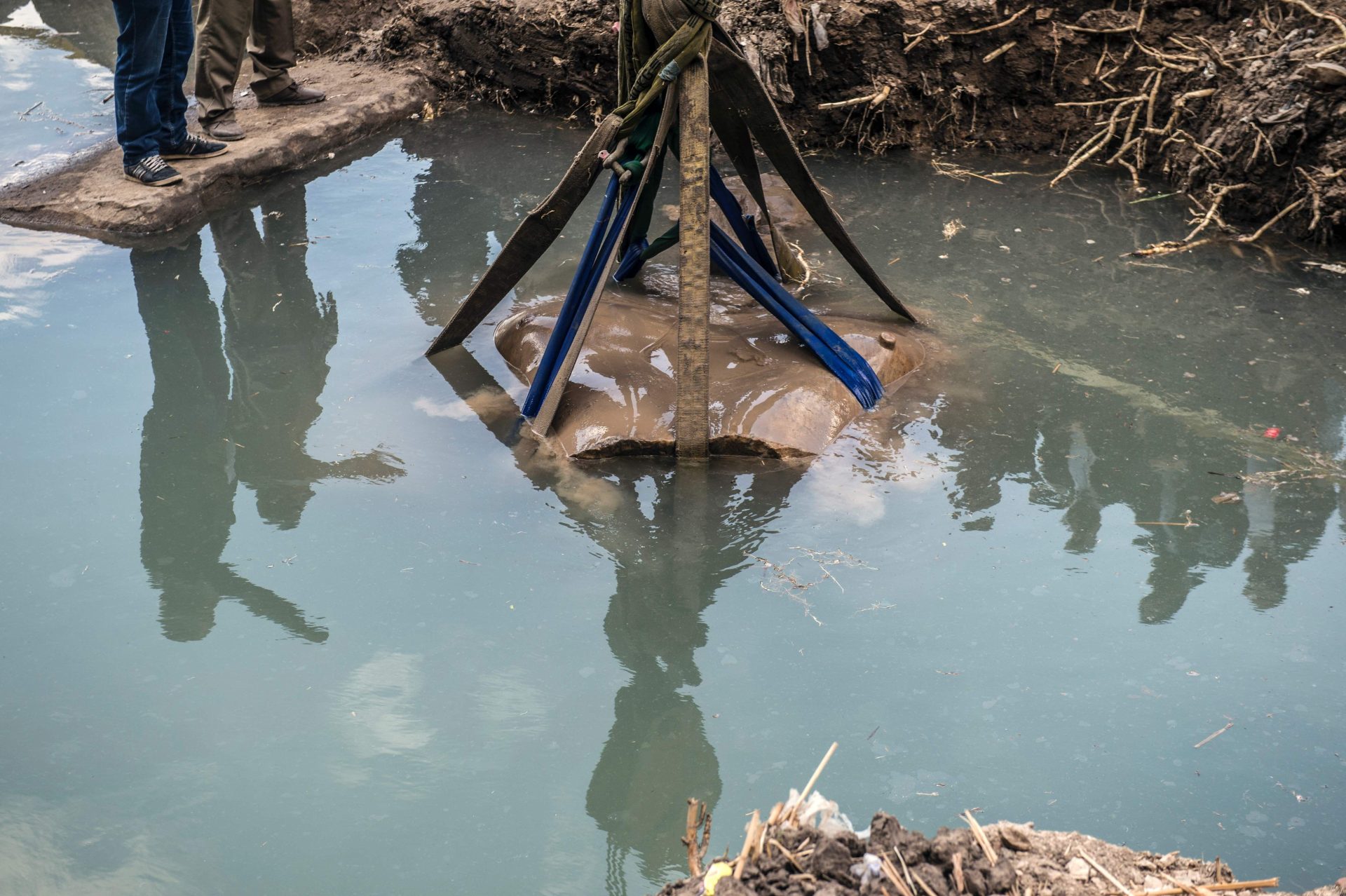
The huge statue is gently raised from a watery grave. It lay undisturbed for thousands of years
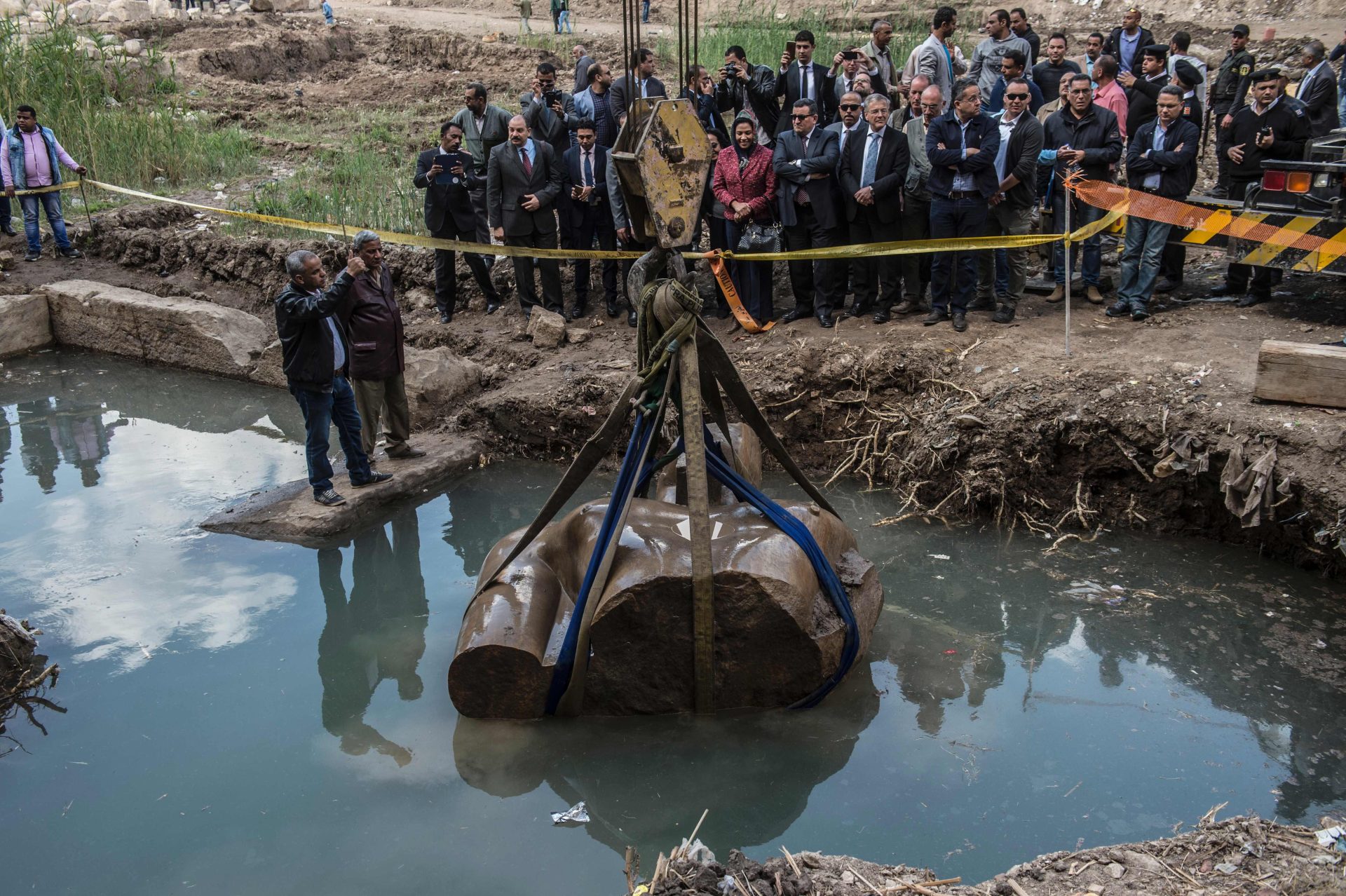
The colossus is believed to represent Ramses II, a vital figure in world history
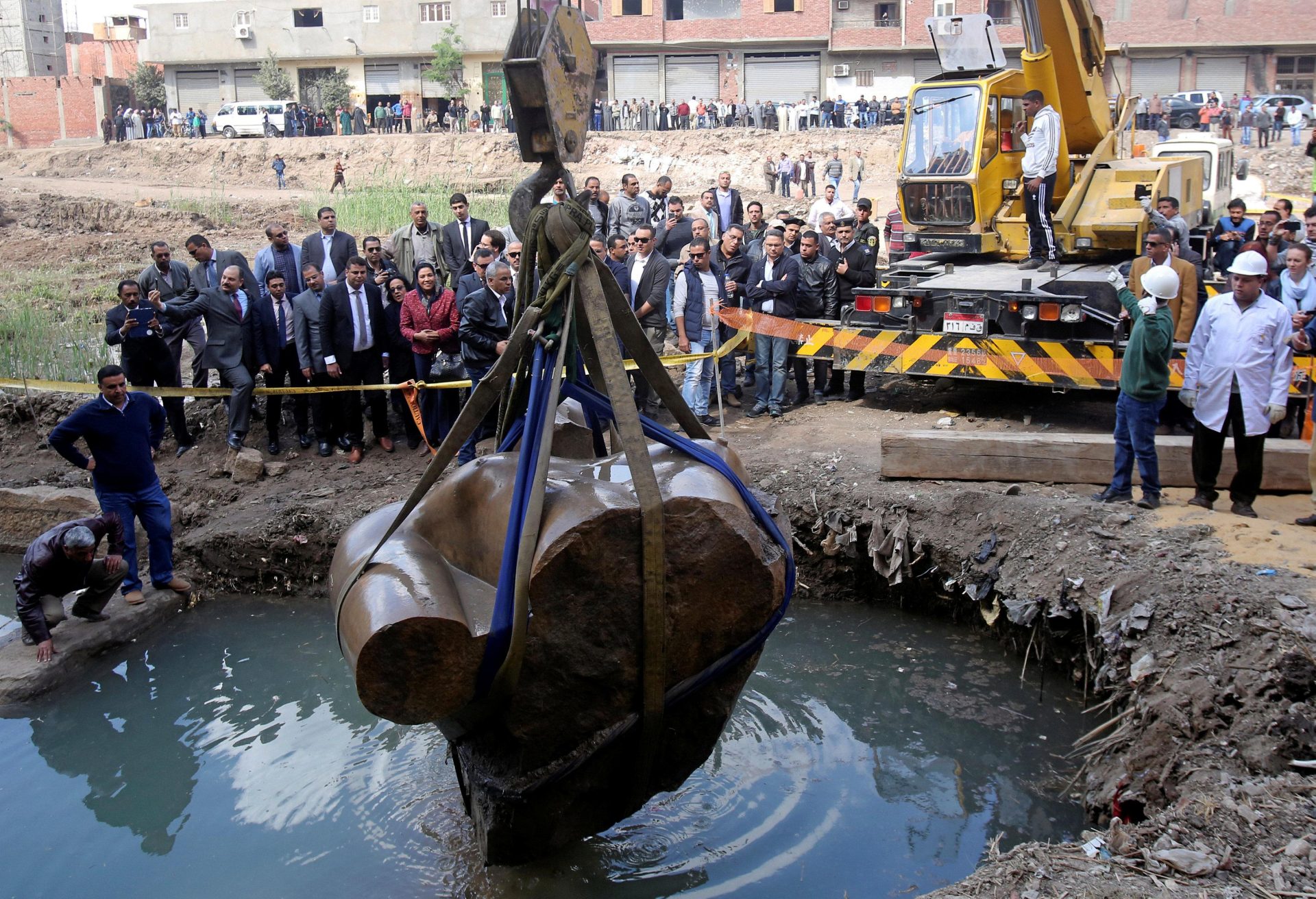
The statue weighs three tonnes and is an incredibly valuable historical find
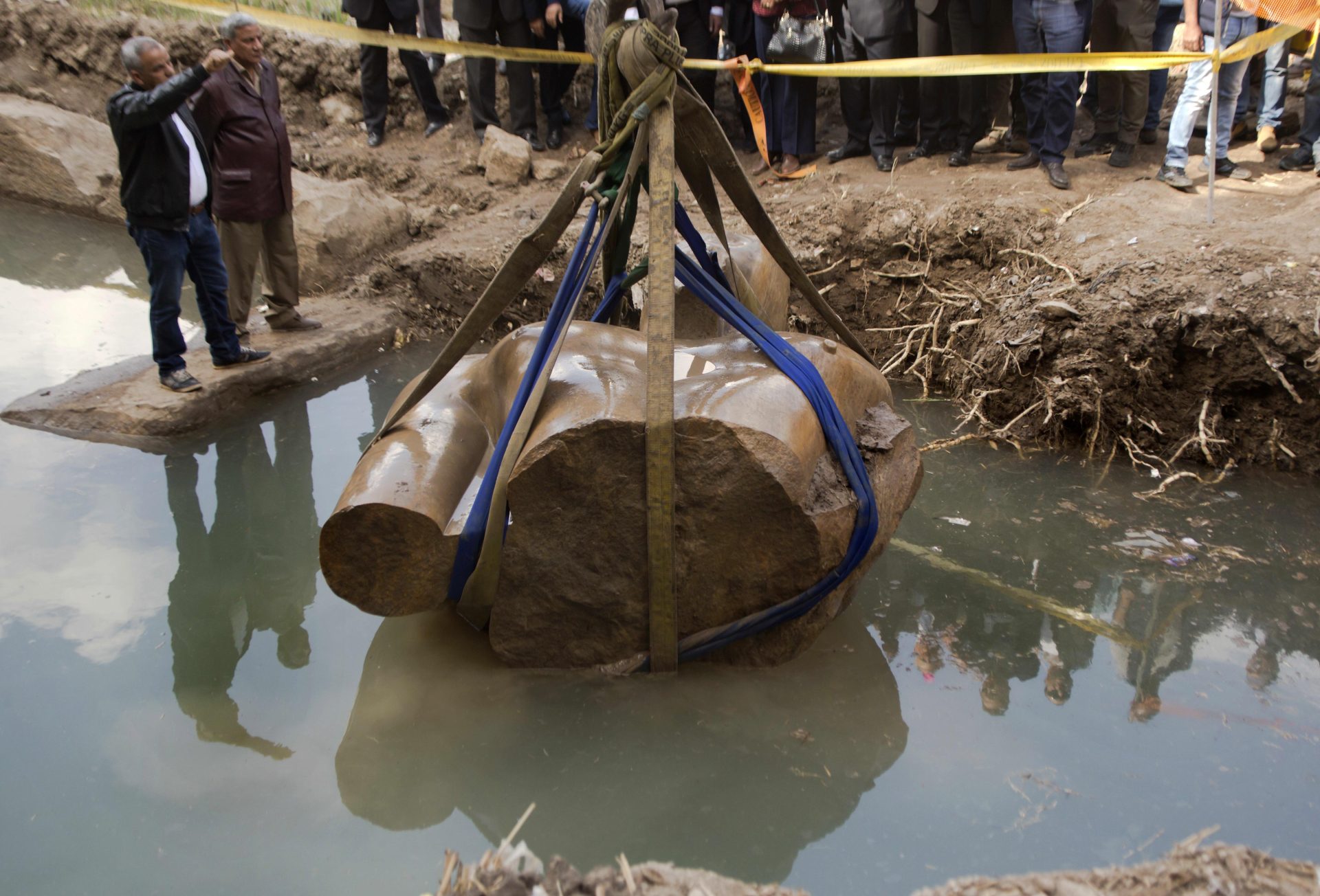
After the statue parts are collected together it will be painstakingly reconstructed 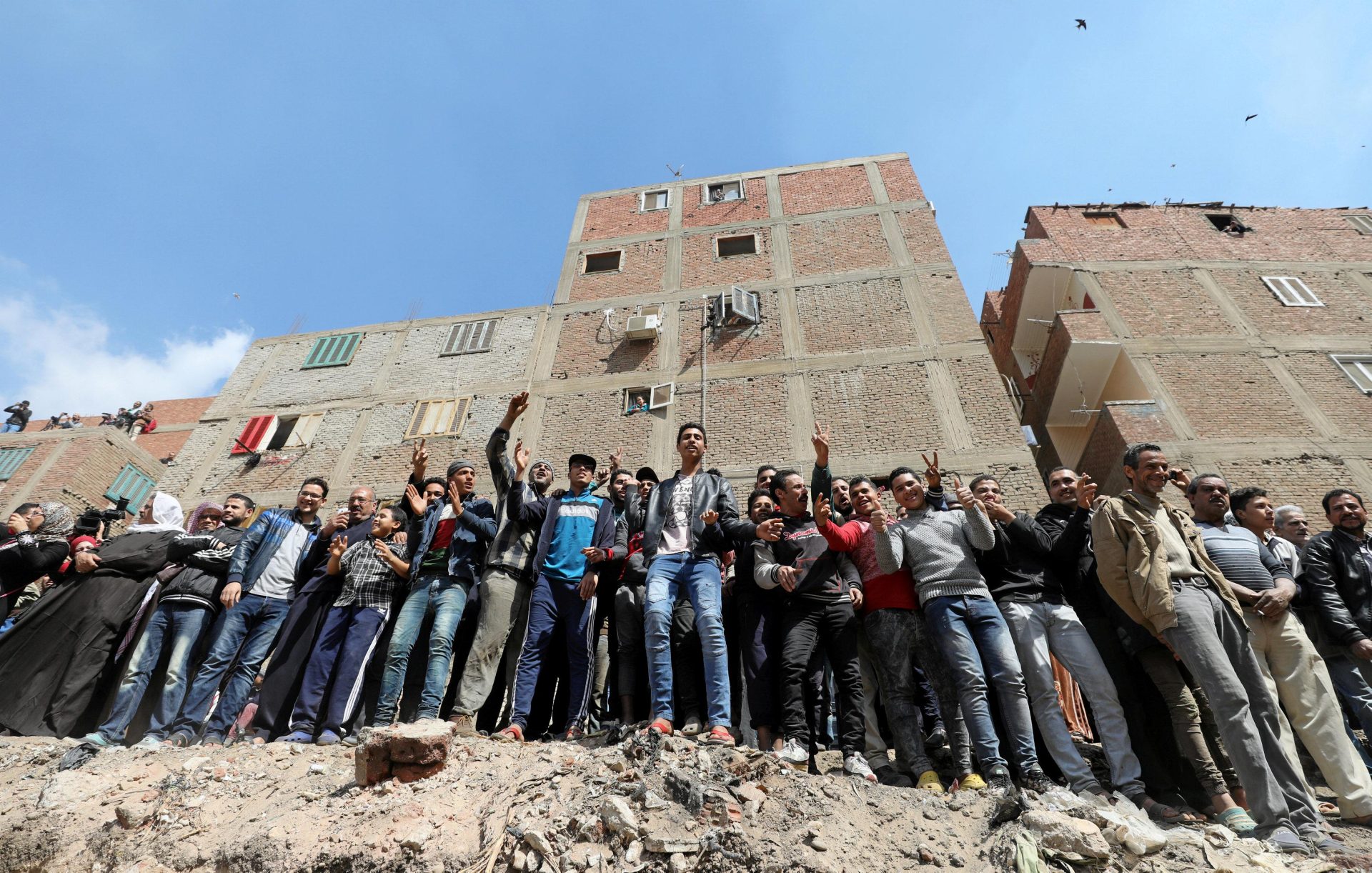
The Ministry of Antiquities says the statue’s parts will be collected at the Egyptian museum in central Cairo, where they will be pieced together and restored before being moved to the Grand Egyptian Museum near the Giza Pyramids.
The discovery, hailed by the Antiquities Ministry as one of the most important ever, was made near the ruins of Ramses II’s temple in the ancient city of Heliopolis, located in the eastern part of modern-day Cairo.
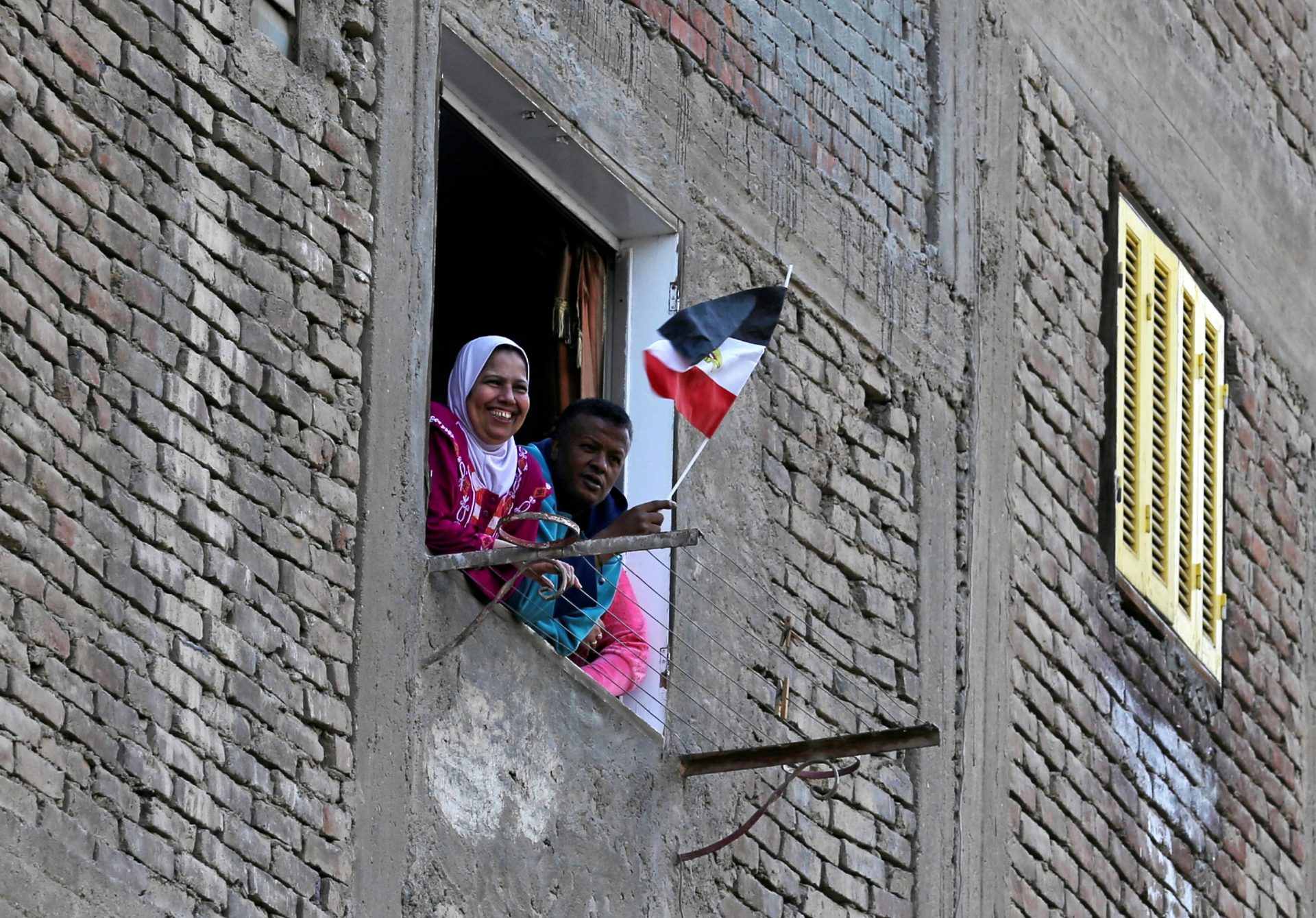
This proud Egyptian waved a flag during the excavation work
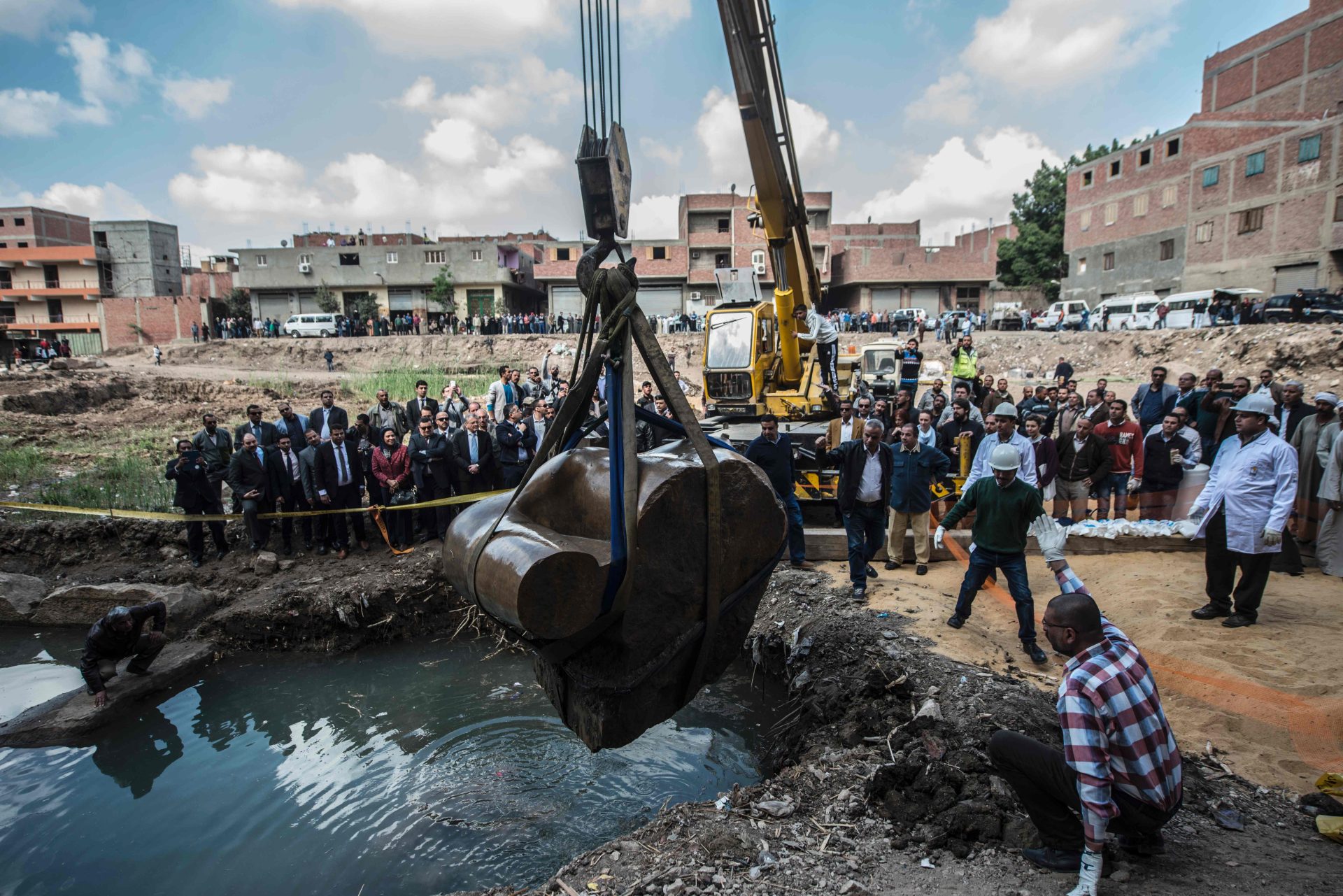 It took dozens of workers to safely guide it to dry land
It took dozens of workers to safely guide it to dry land The discovery was made near the ruins of Ramses II’s temple in the ancient city of Heliopolis
The discovery was made near the ruins of Ramses II’s temple in the ancient city of Heliopolis
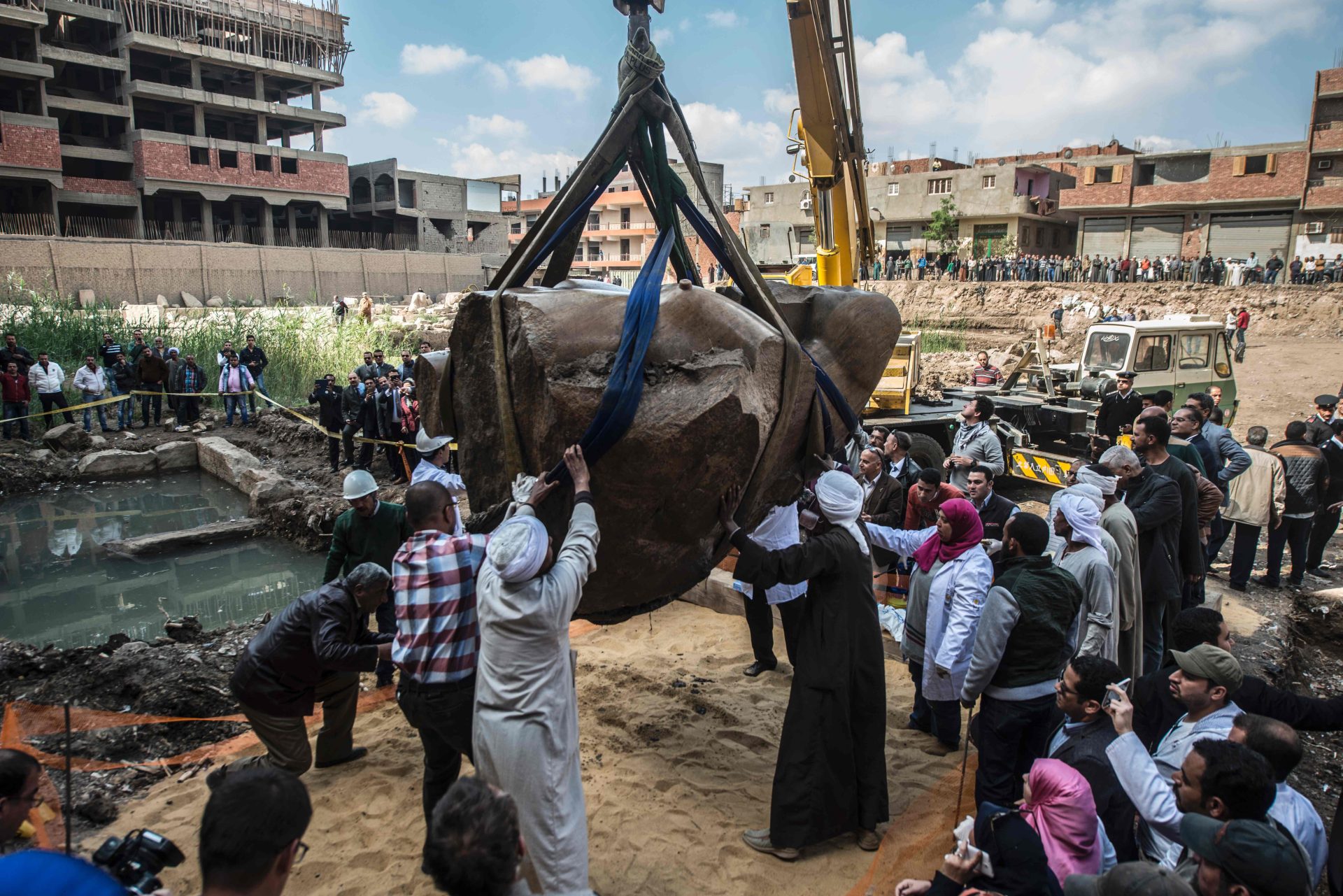
It is hoped the find will bring a boost to Egypt’s under-pressure tourism industry
The most powerful and celebrated ruler of ancient Egypt, the pharaoh also known as Ramses the Great was the third of the Nineteenth Dynasty of Egypt and ruled from 1279 to 1213 BCE.
He led several military expeditions and expanded the Egyptian Empire to stretch from Syria in the east to Nubia in the south. His successors called him the “Great Ancestor”.
The joint Egyptian-German expedition also found the upper part of a life-sized limestone statue of Pharaoh Seti II, Ramses II’s grandson.
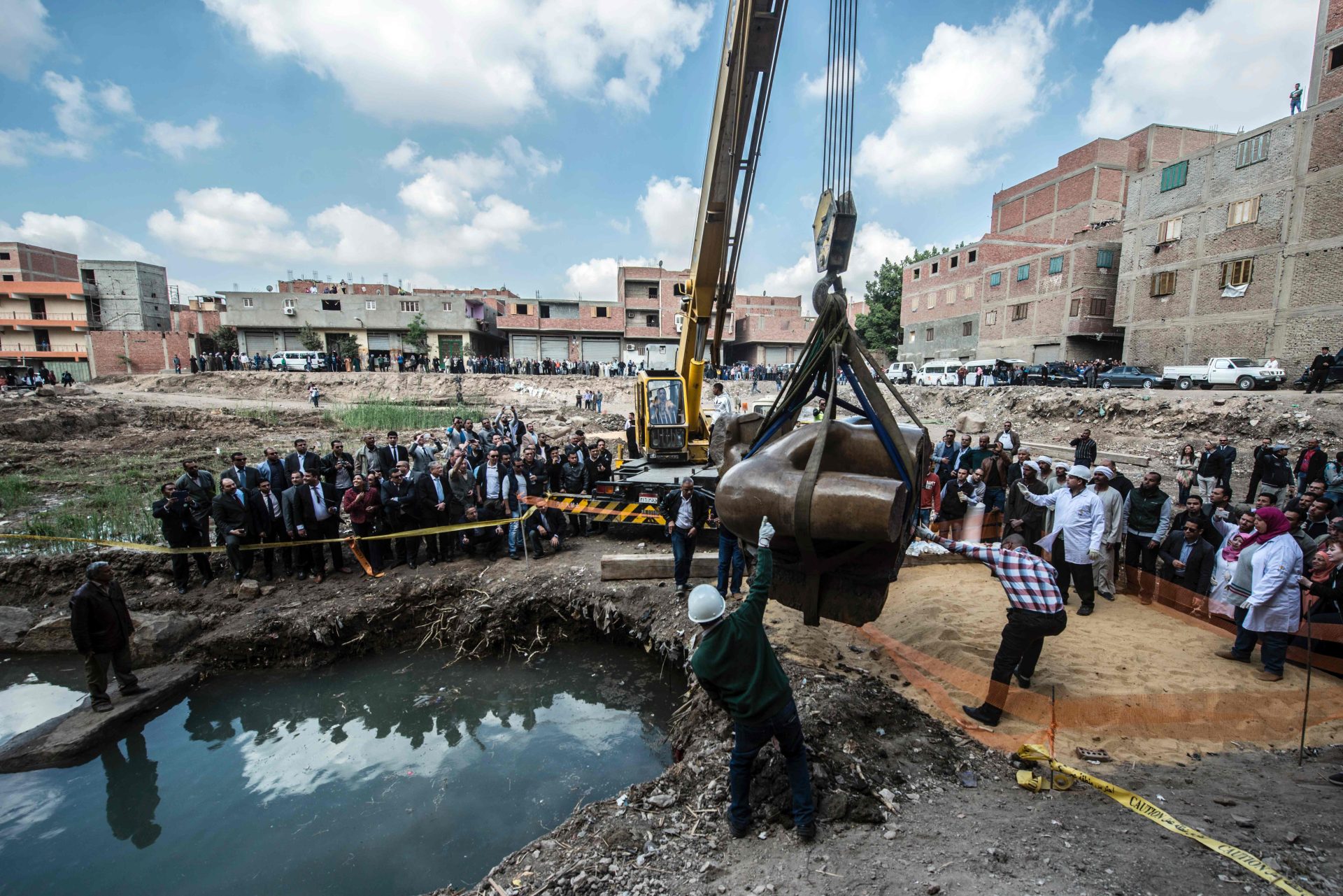
The rebuilt statue will be installed at the Grand Egyptian Museum, which opens next year
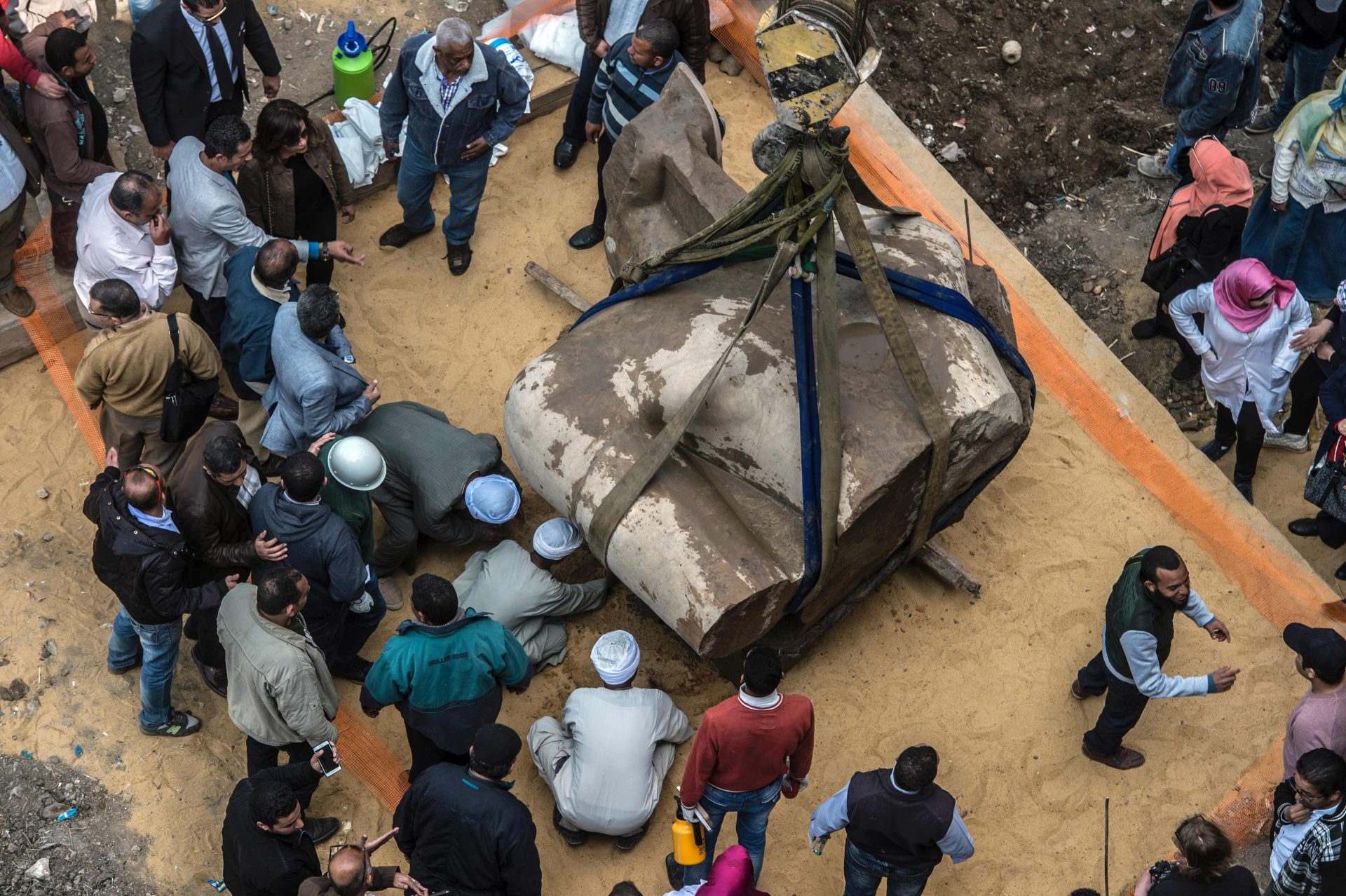
The ancient statue’s torso is carefully lowered to the ground
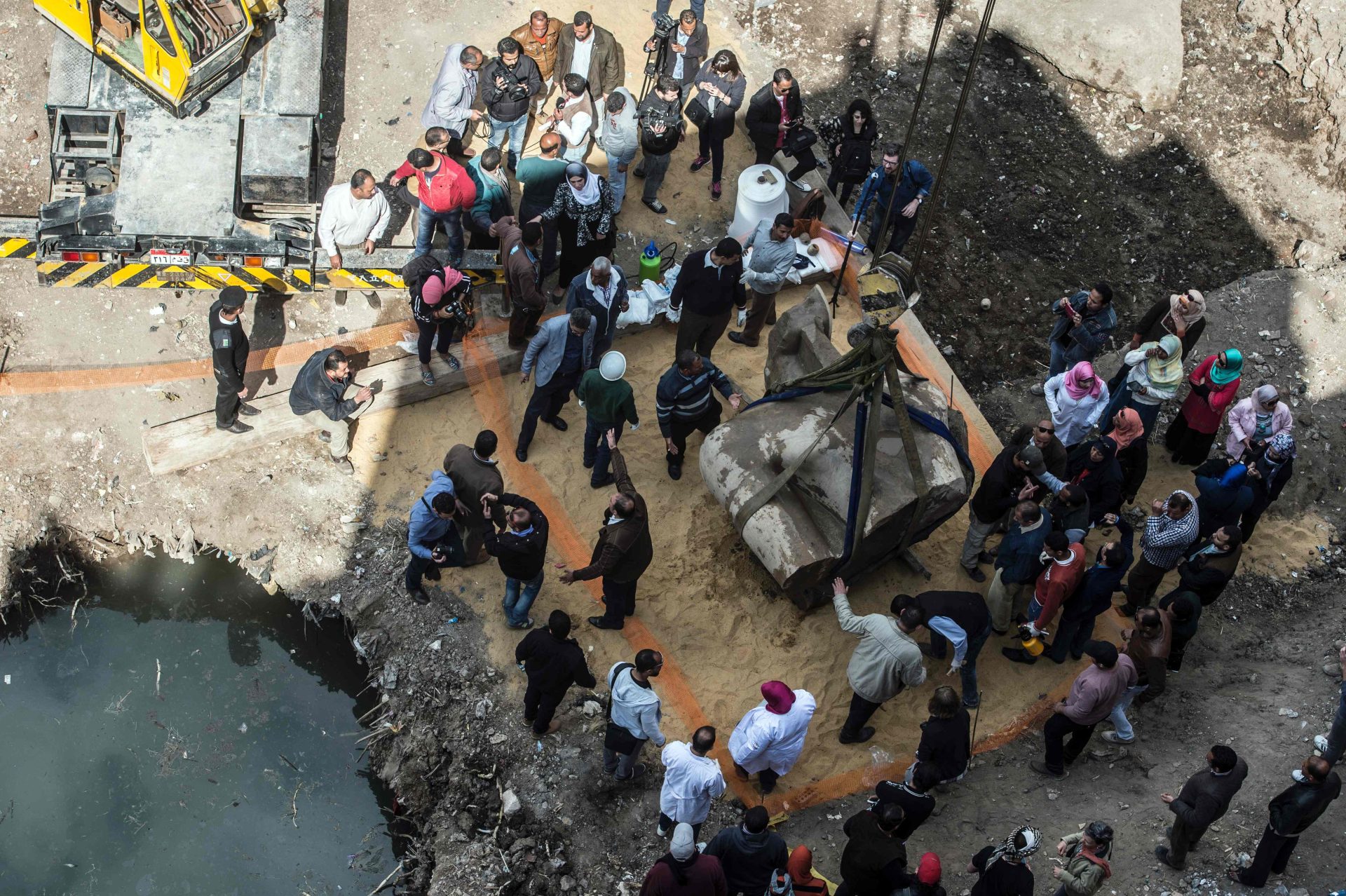
It has been hailed as one of the most important archaeological finds in the field of ancient history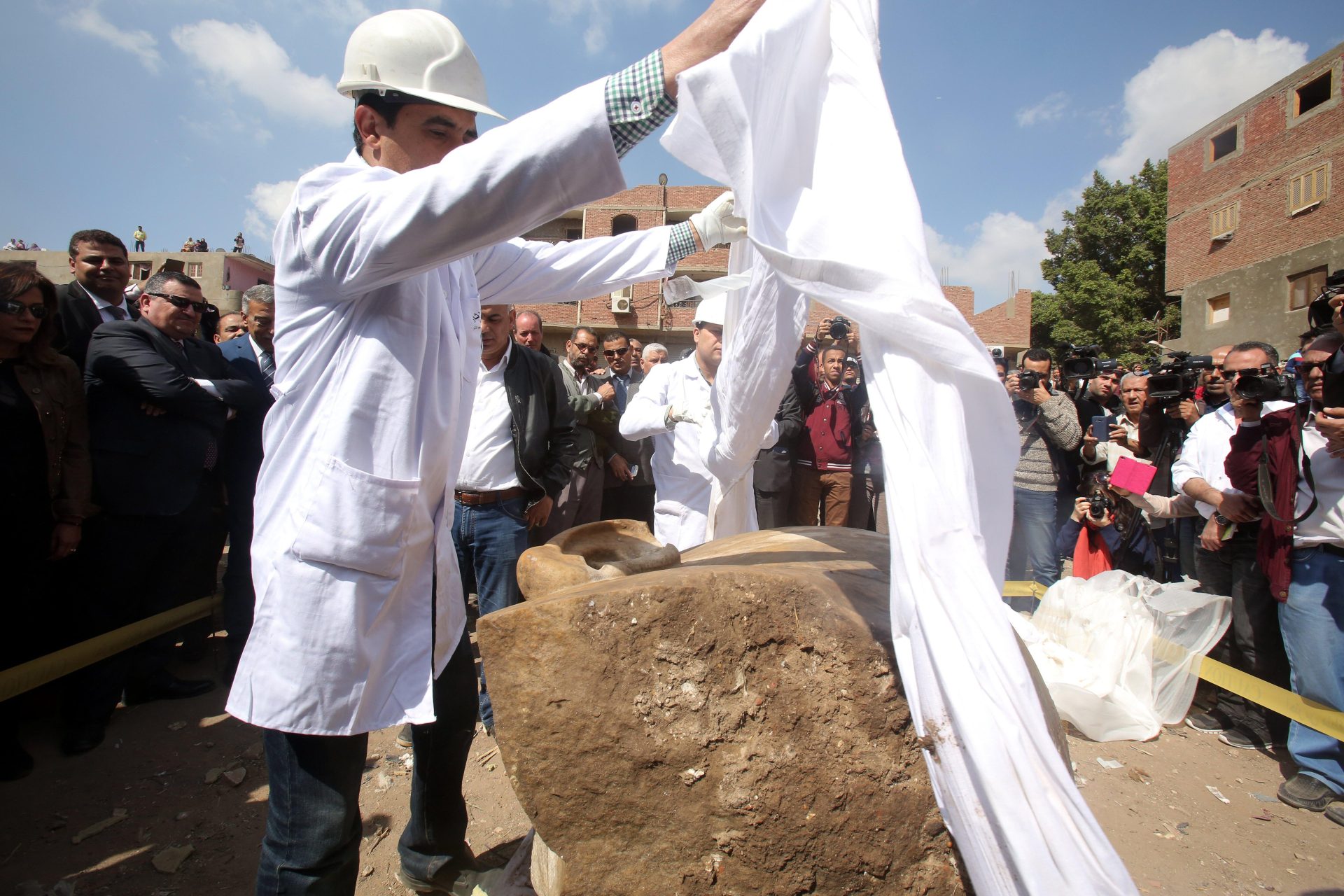 The statue was found underwater in a forgotten chamber underneath a Cairo slum
The statue was found underwater in a forgotten chamber underneath a Cairo slum
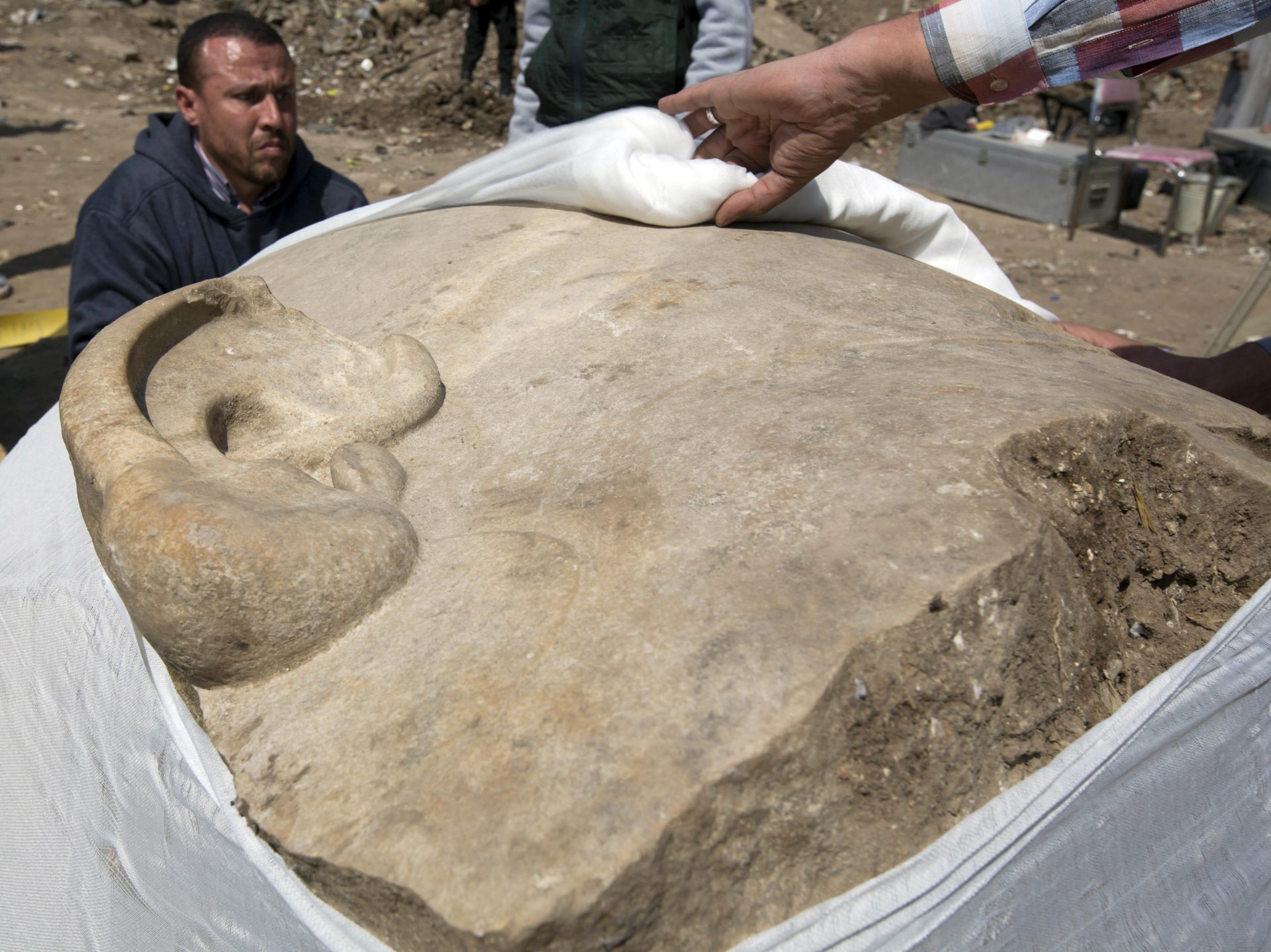
Ramses II led several military expeditions and expanded the Egyptian Empire to stretch from Syria in the east to Nubia in the south
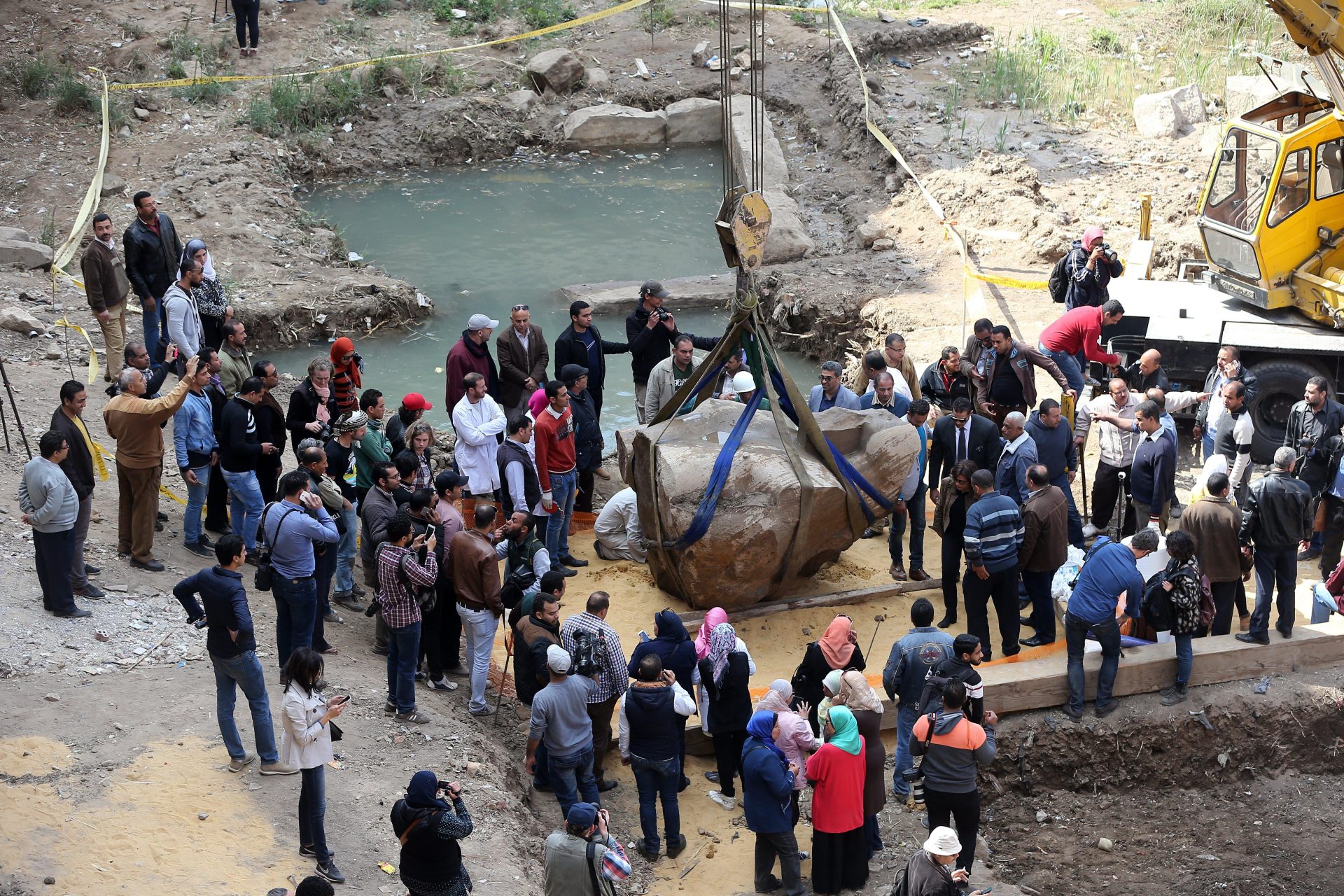
It is the site of one of the largest temples in ancient Egypt
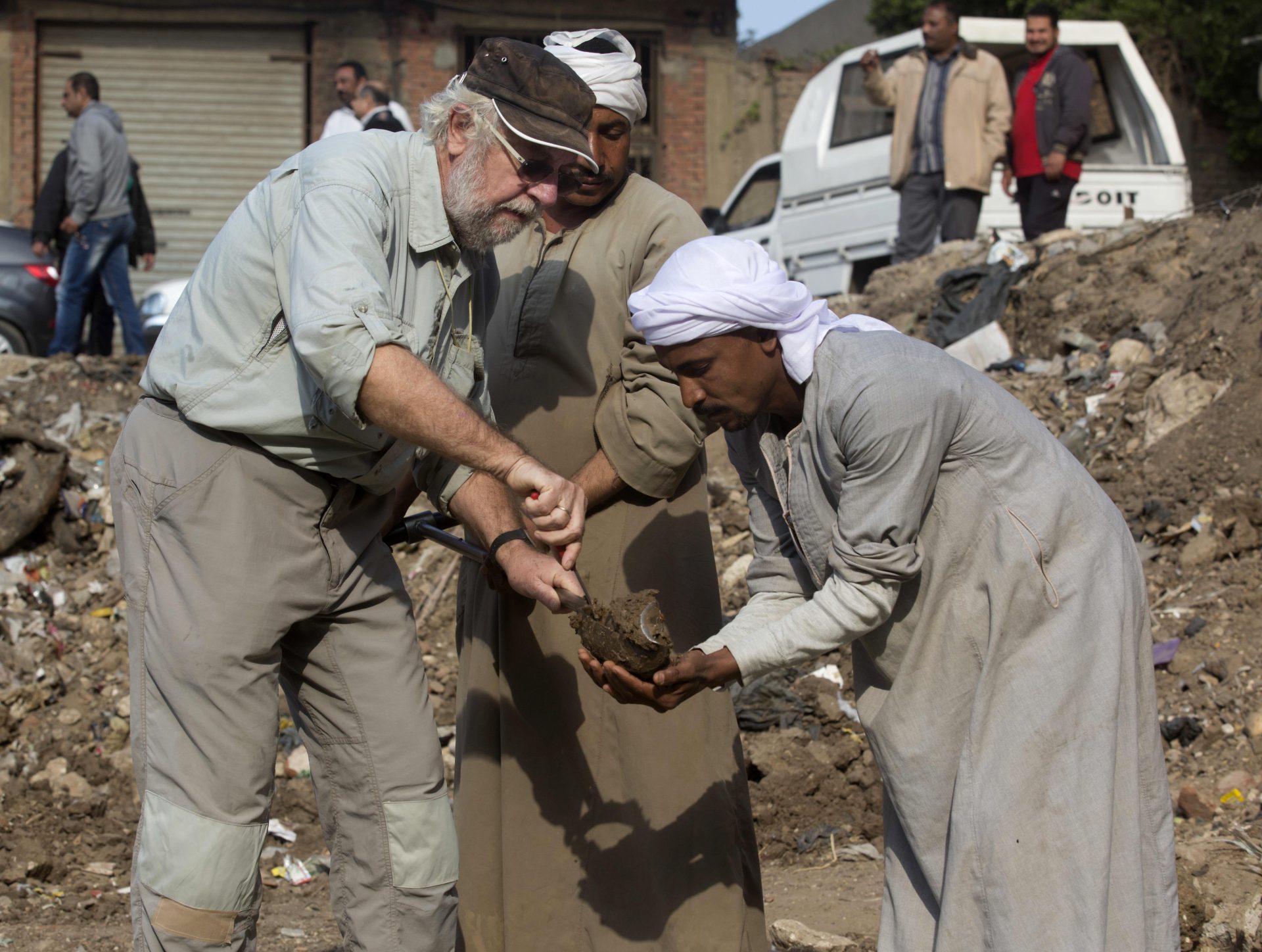
Experts will now attempt to extract the remaining pieces of the statue before restoring it
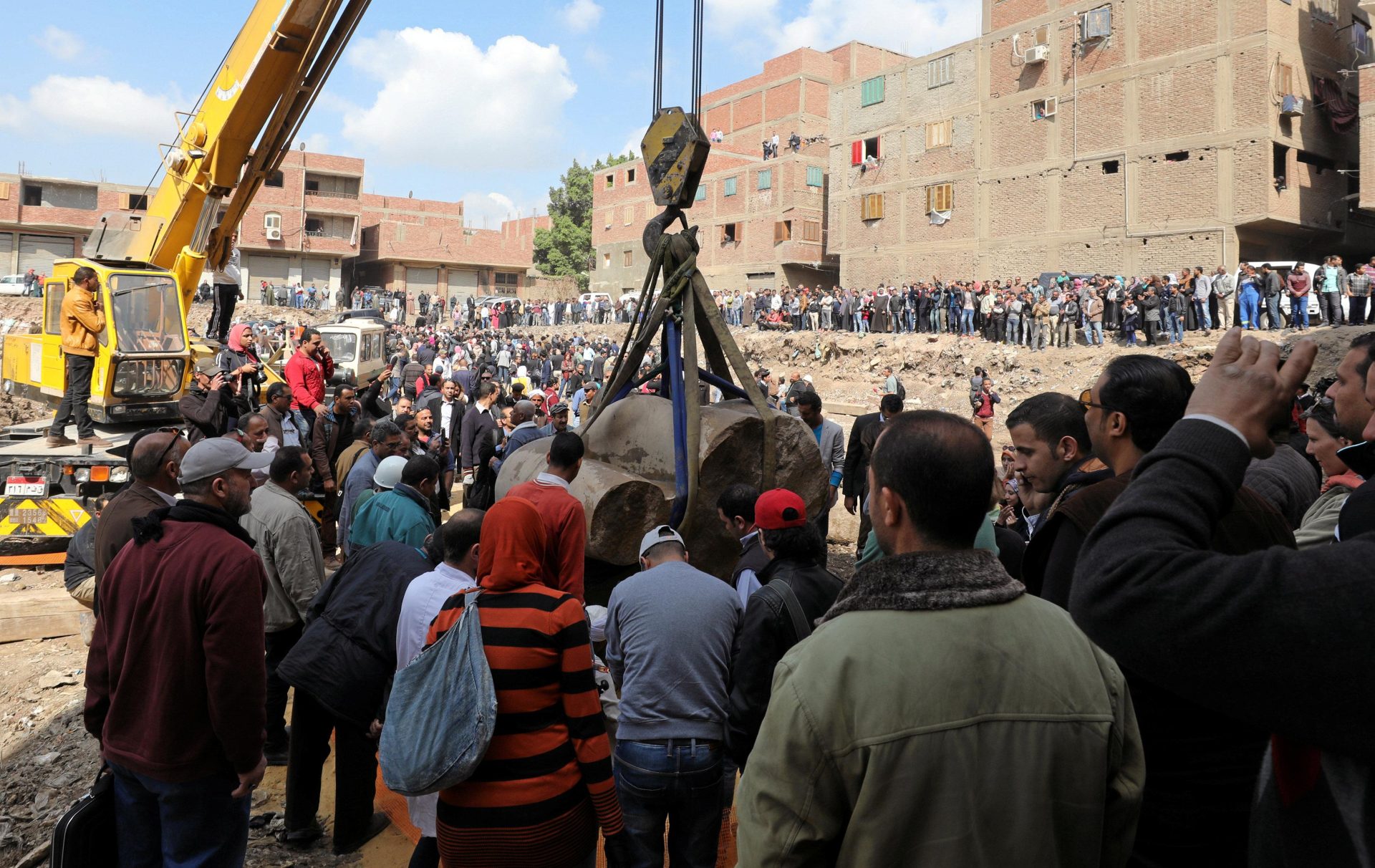
The discovery was made in the working class area of Matariya, among unfinished buildings and mud roads
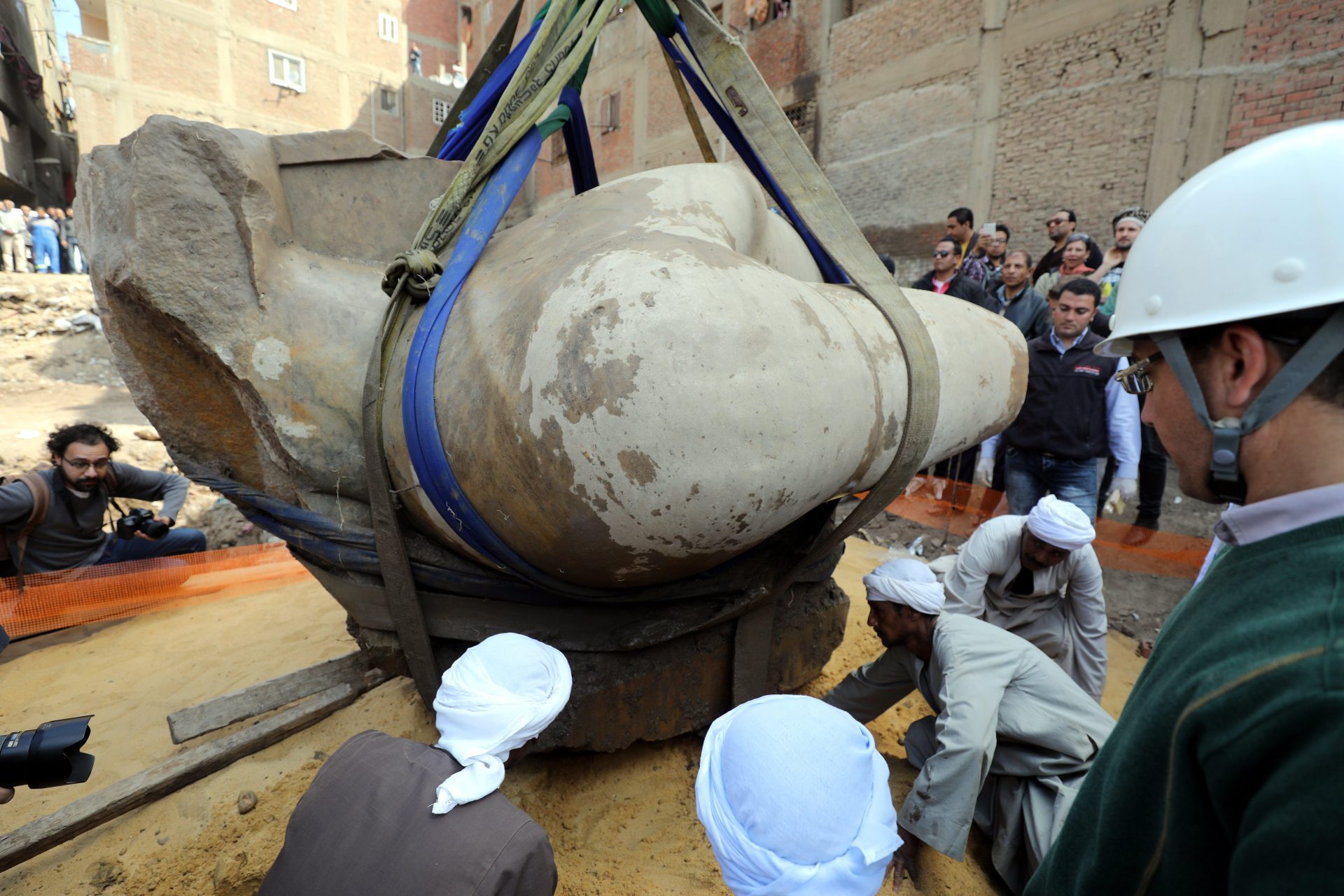
Ancient Egyptians believed Heliopolis was the place where the sun god lived
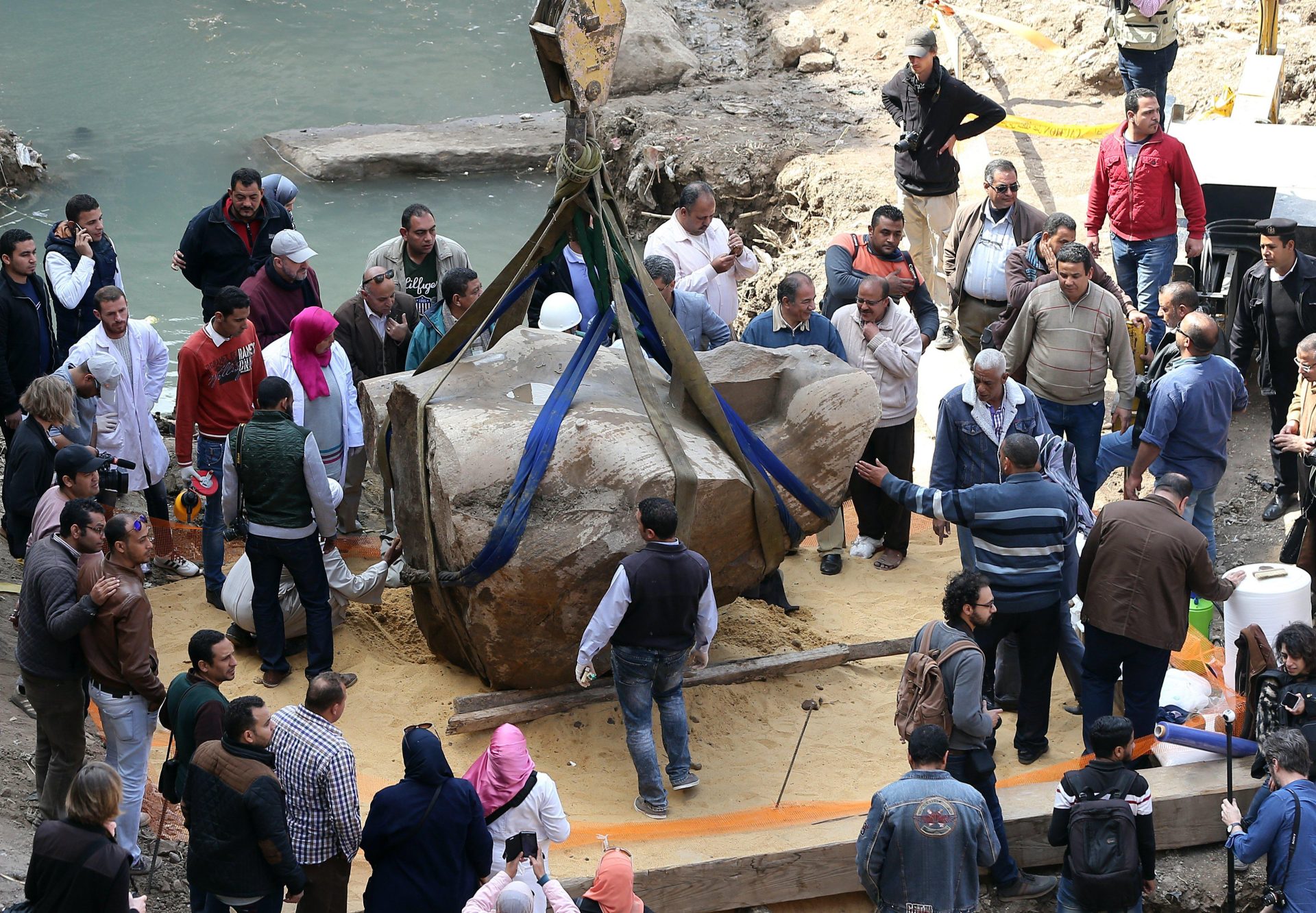
An aerial view gives an impression of how massive the completed statue will be

Sadly, the temple was destroyed in Greco-Roman times
Pharaoh Ramses II ruled Egypt more than 3,000 years ago
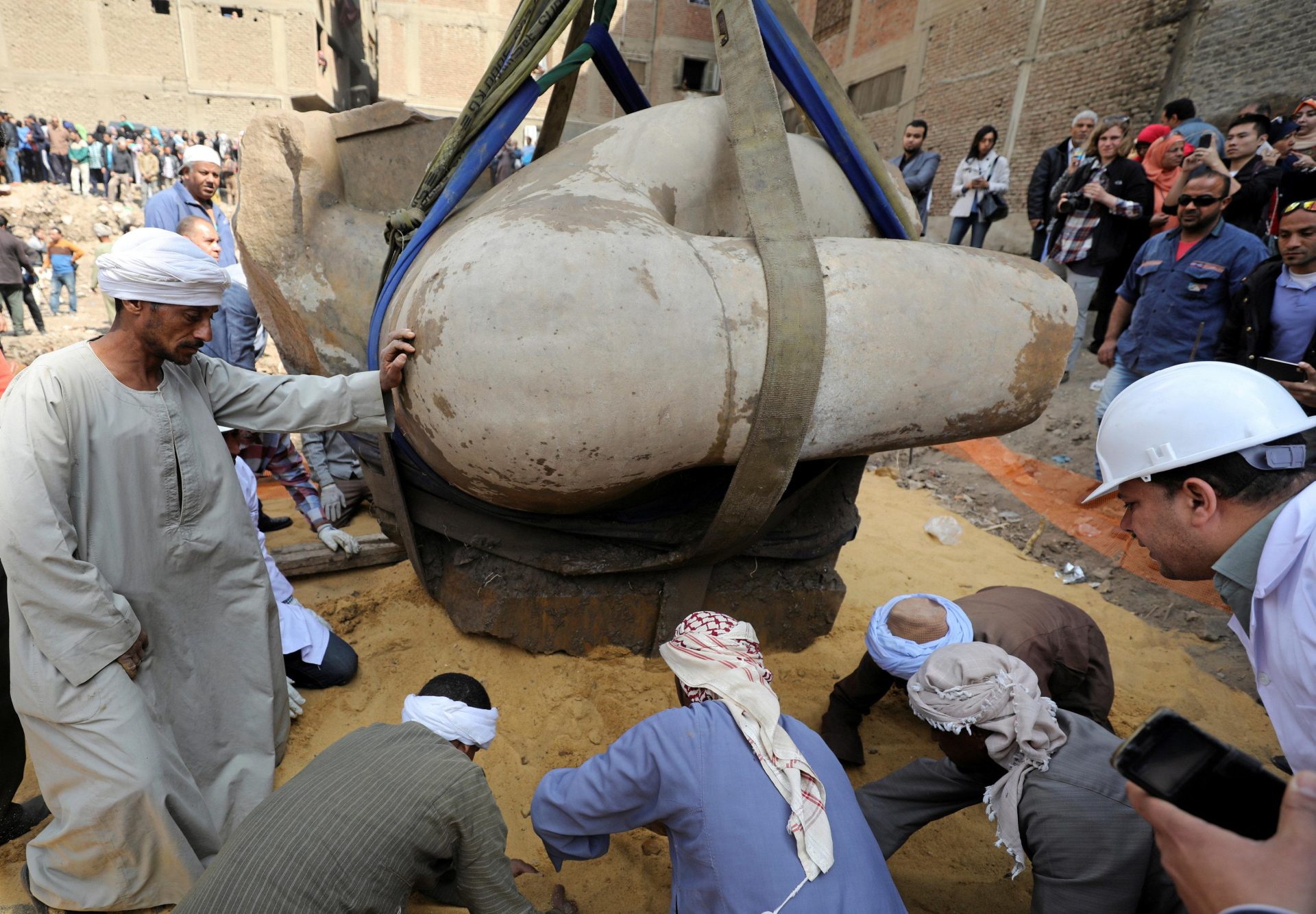
Workers and archaeologists had to be careful not to damage the priceless statue any further
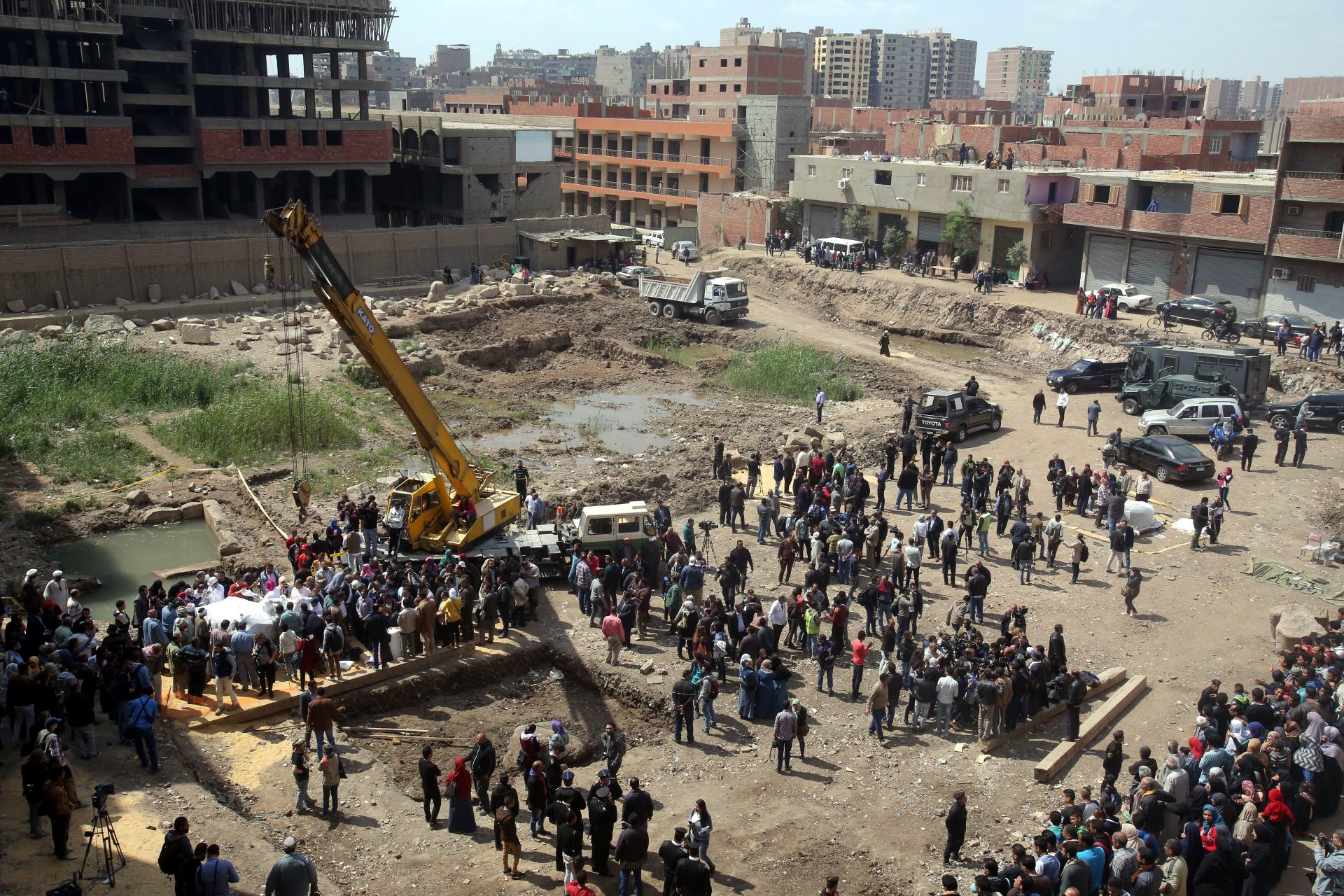
Ramses the Great was the third of the Nineteenth Dynasty of Egypt
A worker grins after the successful recovery
Ramses’ successors called him the ‘Great Ancestor’ Last week a large portion of the statue’s head was recovered
Last week a large portion of the statue’s head was recovered
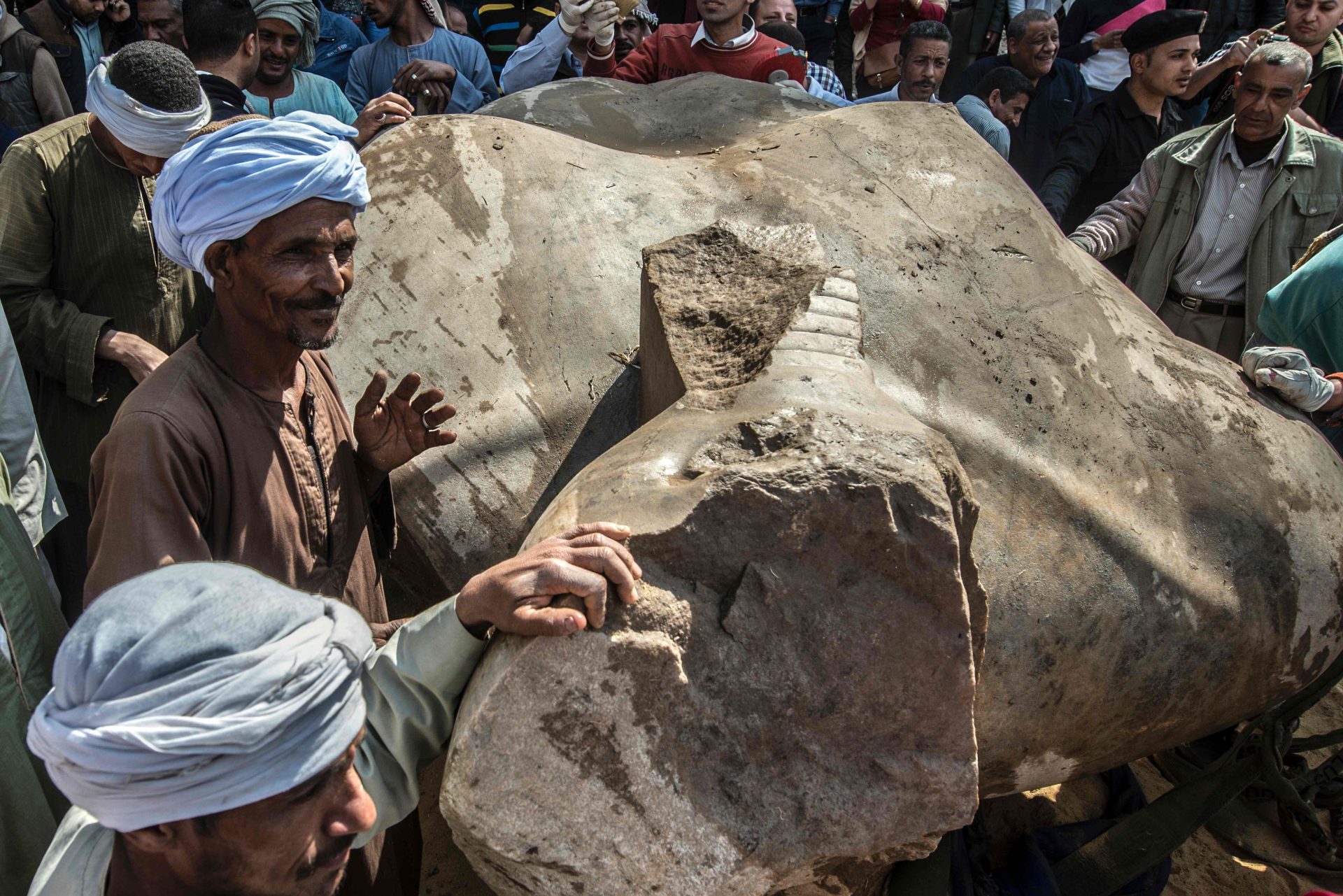
Next year the statue will once again look out over the people of Egypt
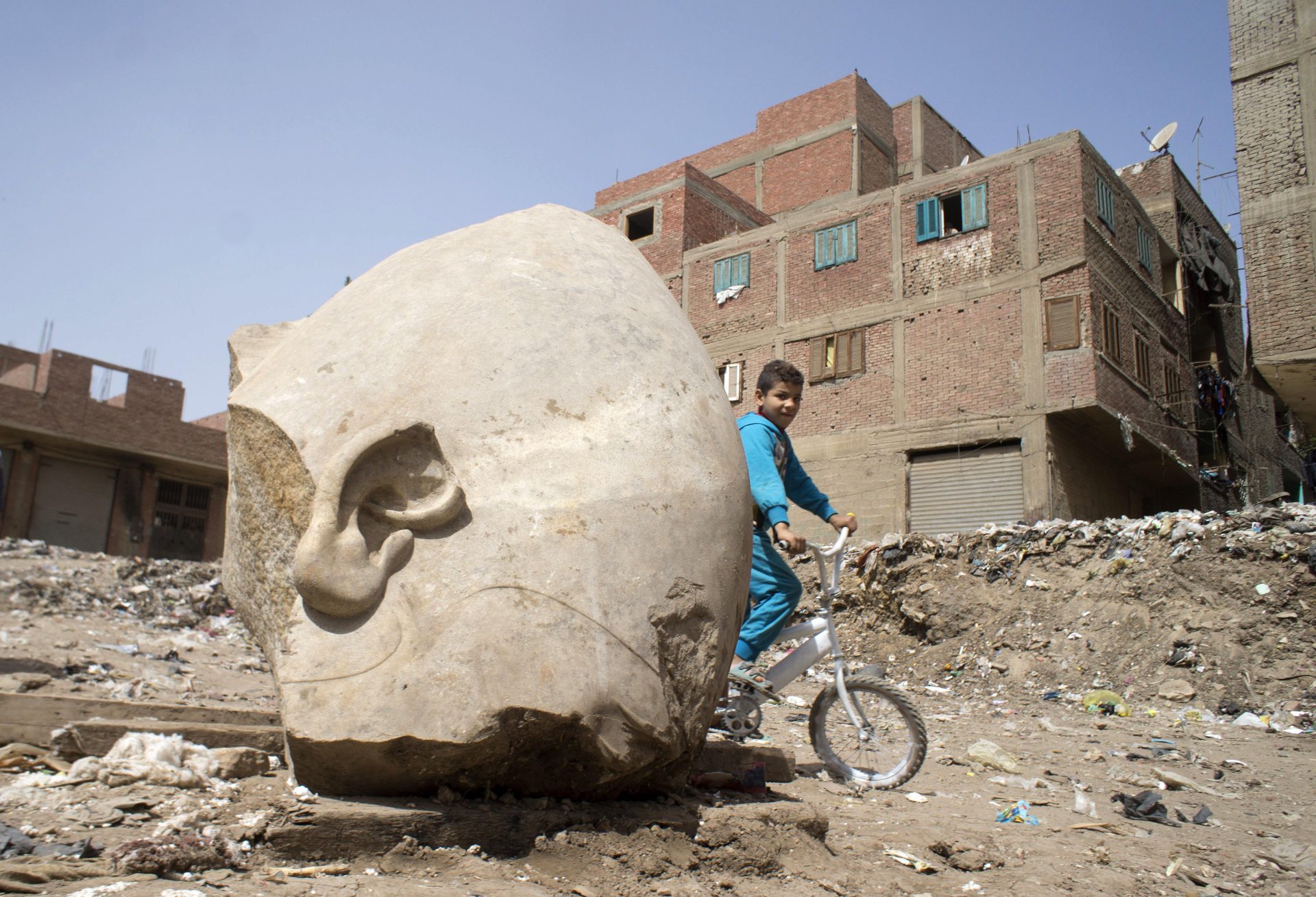
A boy rides his his bicycle past the head of the recently discovered statue
The sun temple in Heliopolis was founded by Ramses II, lending weight to the likelihood the statue is of him, archaeologists say.
It was one of the largest temples in Egypt, almost double the size of Luxor’s Karnak, but was destroyed in Greco-Roman times.
Many of its obelisks were moved to Alexandria or to Europe and stones from the site were looted and used for building as Cairo developed.





